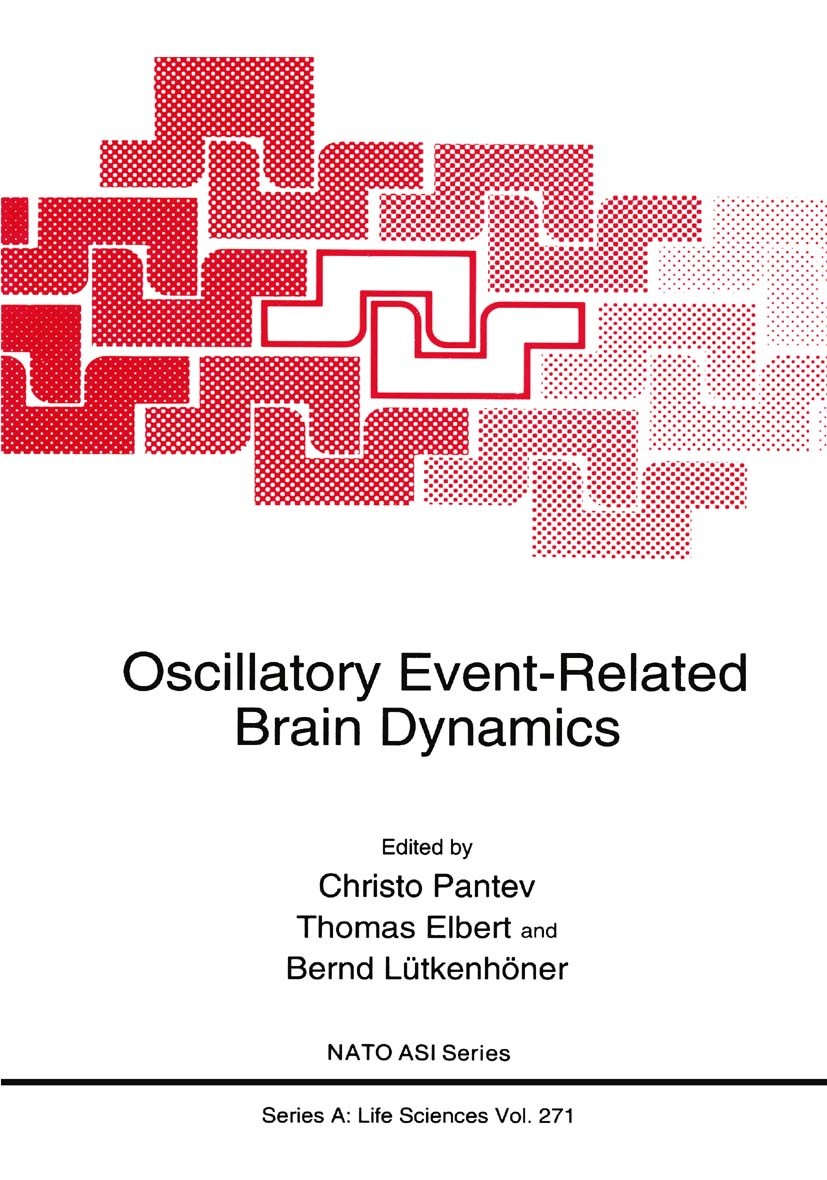| 书目名称 | Oscillatory Event-Related Brain Dynamics |
| 编辑 | Christo Pantev,Thomas Elbert,Bernd Lütkenhöner |
| 视频video | http://file.papertrans.cn/705/704856/704856.mp4 |
| 丛书名称 | NATO Science Series A: |
| 图书封面 |  |
| 描述 | How does the brain code and process incoming information, how does it recog nize a certain object, how does a certain Gestalt come into our awareness? One of the key issues to conscious realization of an object, of a Gestalt is the attention de voted to the corresponding sensory input which evokes the neural pattern underly ing the Gestalt. This requires that the attention be devoted to one set of objects at a time. However, the attention may be switched quickly between different objects or ongoing input processes. It is to be expected that such mechanisms are reflected in the neural dynamics: Neurons or neuronal assemblies which pertain to one object may fire, possibly in rapid bursts at a time. Such firing bursts may enhance the synaptic strength in the corresponding cell assembly and thereby form the substrate of short-term memory. However, we may well become aware of two different objects at a time. How can we avoid that the firing patterns which may relate to say a certain type of move ment (columns in V5) or to a color (V 4) of one object do not become mixed with those of another object? Such a blend may only happen if the presentation times be come very short (below 20- |
| 出版日期 | Book 1994 |
| 关键词 | attention; brain; cortex; electroencephalography (EEG); information processing; memory; neurons |
| 版次 | 1 |
| doi | https://doi.org/10.1007/978-1-4899-1307-4 |
| isbn_softcover | 978-1-4899-1309-8 |
| isbn_ebook | 978-1-4899-1307-4 |
| copyright | Springer Science+Business Media New York 1994 |
 |Archiver|手机版|小黑屋|
派博传思国际
( 京公网安备110108008328)
GMT+8, 2025-12-27 06:59
|Archiver|手机版|小黑屋|
派博传思国际
( 京公网安备110108008328)
GMT+8, 2025-12-27 06:59


